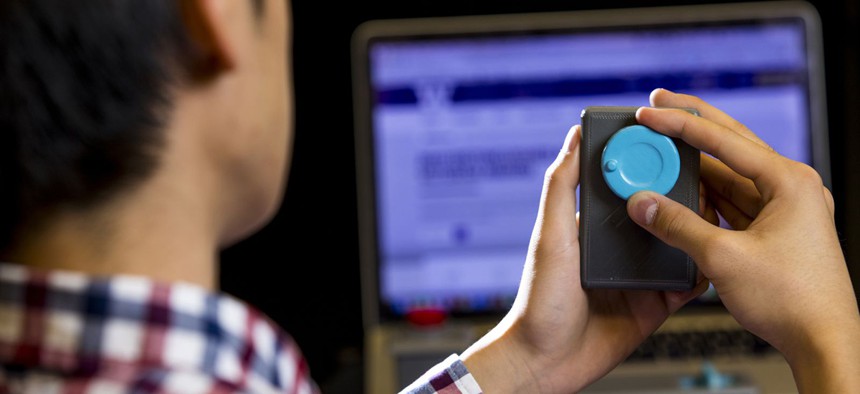Scientists Have Connected 3D-Printed Objects to the Internet Without Electronics

This internet-connected dial requires no electricity. Mark Stone/UW Photography
Rejoice! We have finally connected a laundry detergent bottle to the internet.
Rejoice! We have finally connected a laundry detergent bottle to the internet.
A group of researchers at the University of Washington have created a method for 3D-printing and detecting information from plastic objects that aren’t connected to the internet themselves.
The researchers’ innovation is twofold: First, they print objects with a combination of plastic and copper filaments. Then, using “backscatter techniques,” they’re able to detect any changes to the objects they’ve printed using a wifi router. In this case, backscatter is essentially the radio waves emitted from a wifi router that bounce back to the device. Knowing whether a wave bounces back at a specific place can determine whether the thing it’s bounced back off of has changed at all. In the case of the team’s research, they printed a few different objects with wave-reflective surfaces—the copper parts of what they printed—and when there are changes to those surfaces, they can measure them with a wifi-enabled device attuned to the wifi signals.
The team printed objects to show how this could work in practice, including a button, a wind-speed measuring device, a dial, and a moveable gear. When they’ve moved—such as when the button is pressed, the dial is turned, the wind blows through the devices, and so on—the conductive copper surface will connected and disconnect from the wifi. Those devices can then be used to interact with the internet—the button turned on a computer, the dial scrolled a web browser, and a slider controlled a digital slider.

All of these objects are rough examples of things we use in our daily lives that contain relatively expensive circuitry (and the possibility of being hacked) that could be potentially be constructed at home using simple 3D printers for less, such as internet-connected switches. There’d be no concerns about battery life of wifi-enabled devices like these, as they don’t require any power to run.
The team’s work also opens up the possibility of adding internet connectivity to everyday items. They constructed a simple water flow measurement device that could in theory be incorporated into the design of any bottle, so if you’re running out of milk, detergent, or maple syrup, the speed at which liquid is flowing over the sensor could alert the web to reorder that item for you.
So in the near future, groceries could know when they’re running low, and automatically reorder themselves for you; and perhaps the surfaces in your home themselves will be controllable through the internet. It’s like an Amazon Dash button that you don’t even need to press.





